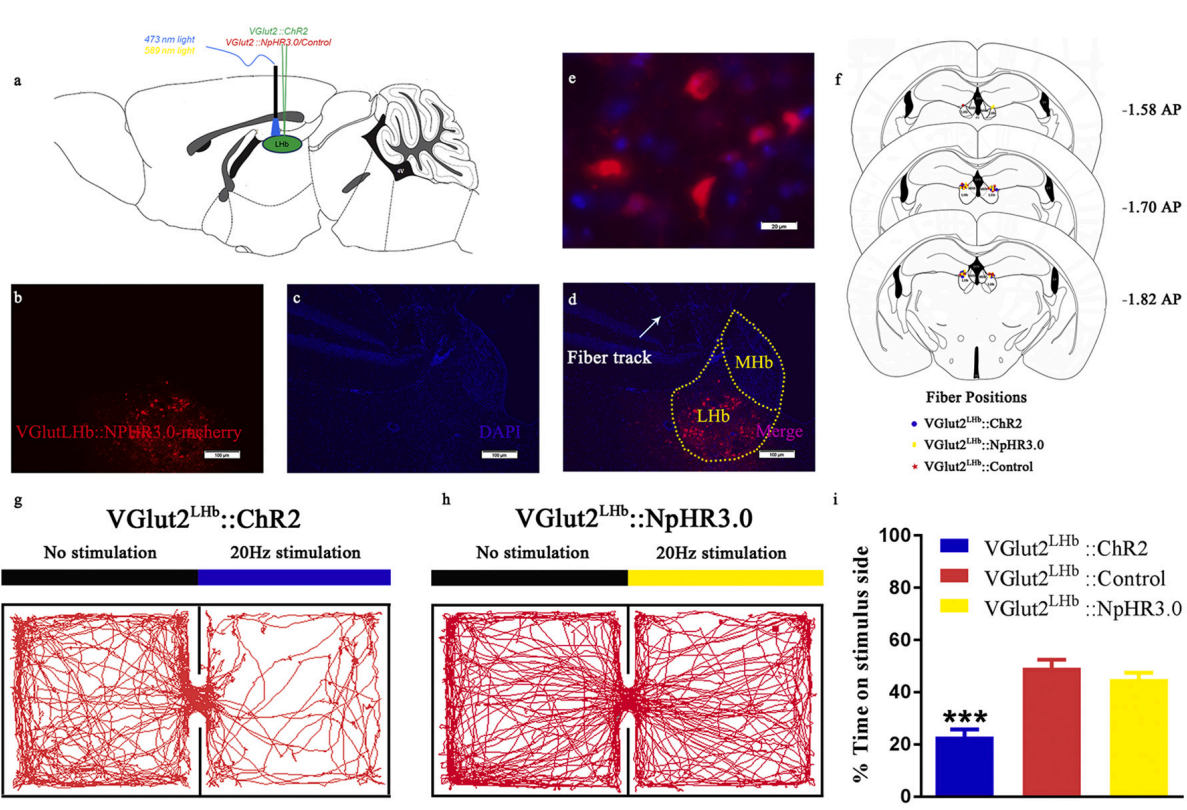AAV-hChR2 and AAV-eNpHR3.0 were used for optogenetic manipulation. (From
BrainVTA)
The viruses used in this article from BrainVTA are in the table below
|
Optogenetic |
PT-0001 AAV2/9-EF1a-DIO-hChR2(H134R)-EYFP-WPRE-pa
PT-0007 AAV2/9-EF1a-DIO-eNpHR3.0-mCherry-WPRE-pa |
|
Control |
PT-0013 AAV2/9-EF1a-DIO-mCherry-WPRE-pa |
Jicheng Li, Renfei Fan, Xiaofeng Liu, Xiangfeng Shen, Xin Liu, Hua Zhao
Pub Date: 2021-02-05,
DOI: 10.1016/j.expneurol.2021.113637,
Email: sales@brainvta.com
The lateral habenula (LHb) and ventral tegmental area (VTA) are two structures closely connected, and they serve as aversion and reward junction of the brain, respectively. This study investigated whether single neurons in the LHb/VTA respond to both aversion and reward stimuli and how these neurons regulate aversion and reward processing. Using optogenetic combined with multi-channel recording of LHb / VTA neuronal discharge, we found that most single neurons in the LHb/ VTA respond to both aversion and reward stimuli. Interestingly, majority of neurons in LHb were aversion-activated and reward-inhibited neurons, consisting mainly of glutamatergic neurons, while most neurons in VTA were reward-activated and aversion-inhibited neurons, which inhibited by glutamatergic neurons in the LHb. Furthermore, optogenetic activation or inhibition of glutamatergic neurons in LHb and their terminals in VTA could induce aversive or reward behaviors. These results indicate that identical neurons in the LHb and VTA have different responses to reward and aversion stimuli. The aversion behaviors induced by activating LHb glutamatergic neurons may be due to its inhibition on reward-activated neurons in VTA. This study suggests that interplay between the LHb and VTA neurons may play a key role in regulating reward and aversion behaviors.
 Figure 1. Optogenetic stimulation of VGlut2 neurons in the LHb acutely modulates aversion- but not reward-related behaviors.
Figure 1. Optogenetic stimulation of VGlut2 neurons in the LHb acutely modulates aversion- but not reward-related behaviors.
This study was aimed to investigate whether single neurons in the LHb/VTA respond to both aversion and reward stimuli and how these neurons regulate aversion and reward processing. Using optogenetic combined with multi-channel recording of LHb / VTA neuronal discharge, the results indicate that identical neurons in the LHb and VTA have different responses to reward and aversion stimuli, which suggests that interplay between the LHb and VTA neurons may play a key role in regulating reward and aversion behaviors.
BrainVTA offers viral vector construction & virus packaging services for AAV, LV, RABV, PRV, HSV and VSV that help researchers explore questions about genes, neurons, circuitry structure, function of brain network, mechanism and treatment of diseases.
If you have any needs, just email us at
sales@brainvta.com.
